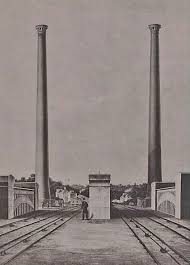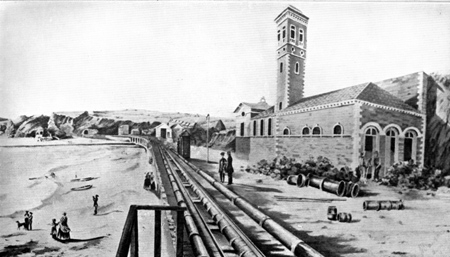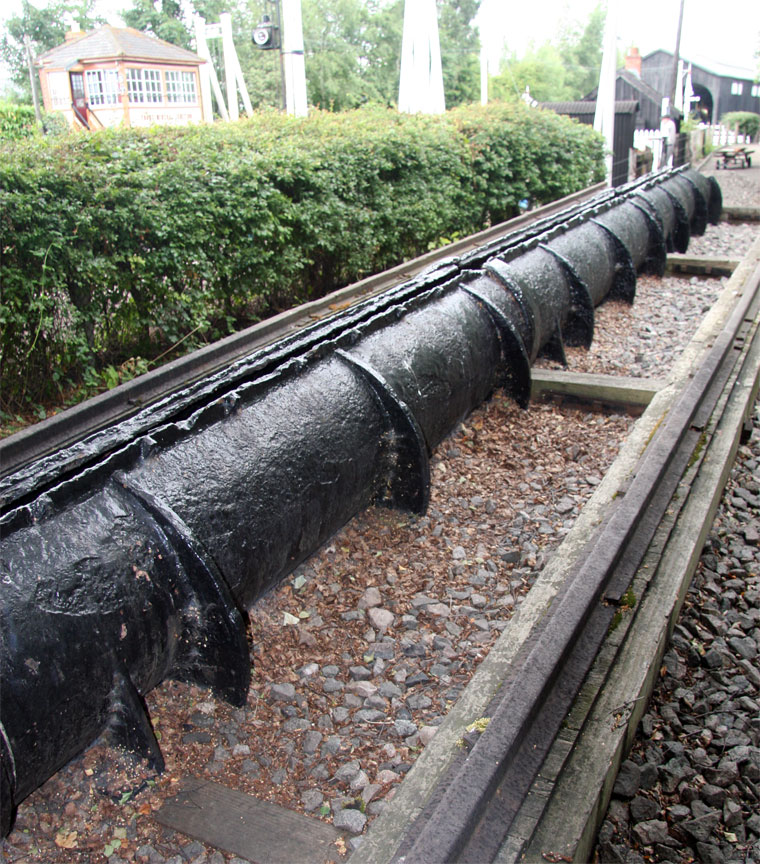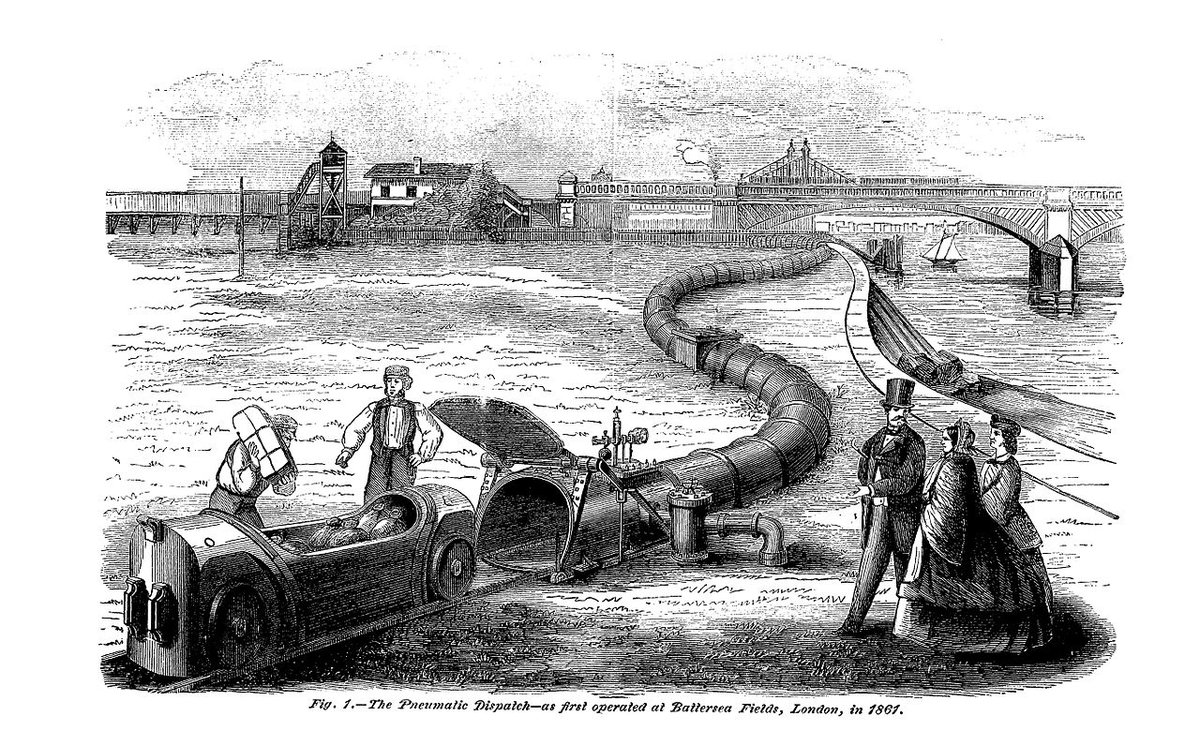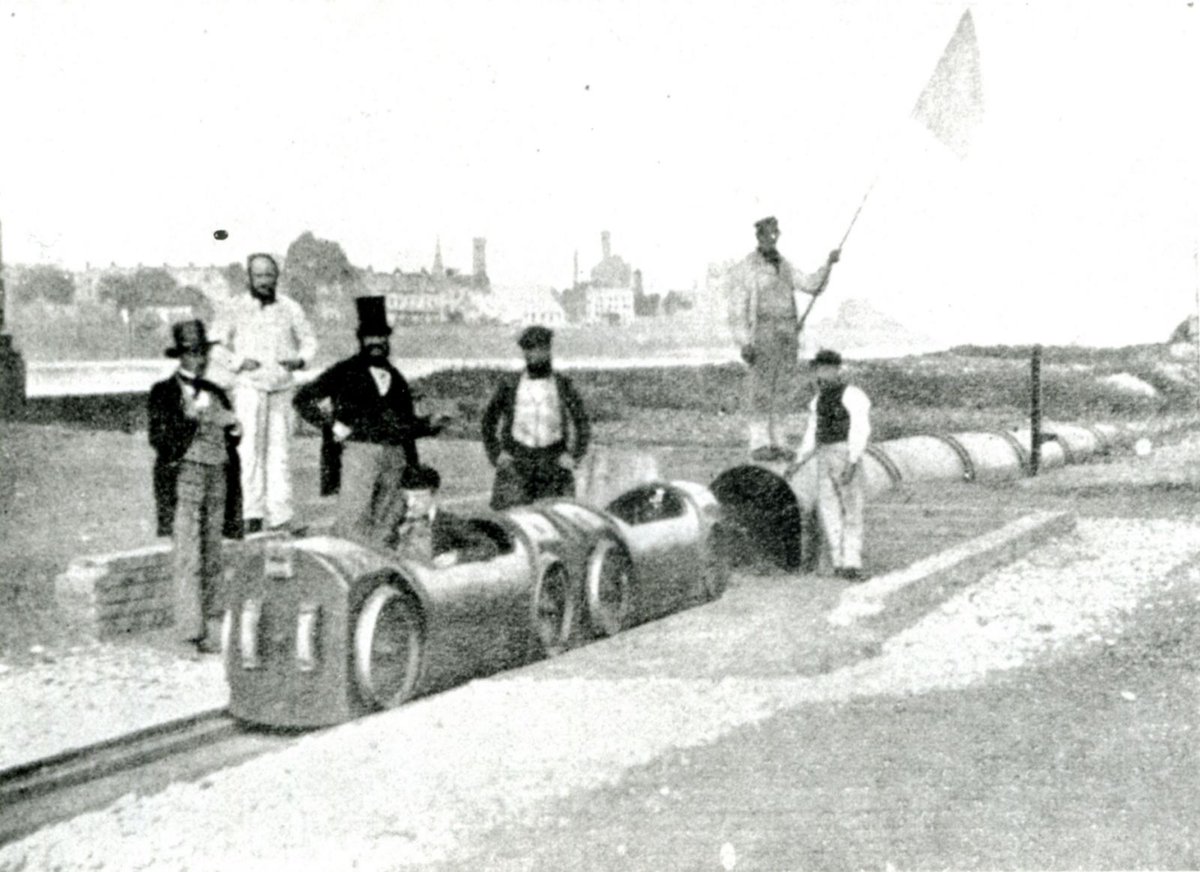This thing here is the Crystal Palace Pneumatic Railway. The idea was the carriage rolled into the tunnel under gravity, formed an airtight seal, and was then sucked along by a pump at the other end.
It& #39;s not much of a spoiler to note we& #39;re not using it today.
It& #39;s not much of a spoiler to note we& #39;re not using it today.
I also can& #39;t help but notice that carriage looks like a dog wearing the cone of shame.
For a brief period, however, atmospheric railways were the future.
I wouldn& #39;t get excited if I were you. Terrycloth onesies were the future once too.
I wouldn& #39;t get excited if I were you. Terrycloth onesies were the future once too.
Atmospheric railways were intended to solve a problem with early locomotives. Relatively lightweight and low powered, gradients were a problem.
The traditional solution was a rope-worked incline, as used at Liverpool& #39;s Crown Street and here at Euston.
The traditional solution was a rope-worked incline, as used at Liverpool& #39;s Crown Street and here at Euston.
Rope-worked inclines though were a bit... industrial.
What promoters wanted was something at the cutting edge of technology. Luckily Joseph Samuda had something in the pipeline
What promoters wanted was something at the cutting edge of technology. Luckily Joseph Samuda had something in the pipeline
Samuda& #39;s system involved a "piston carriage" which plugged into the pneumatic tube. A slot in top sealed by a leather valve allowed the connection with the carriage above. Stationary pumping engines would then create a partial vacuum and drag the train along.
It& #39;s probably easier to see what& #39;s going on in this later French application of the same design, and I can only regret that pneumatic battleships were not a thing.
The first commercial application was at Dalkey, in Ireland, on a line thought to be too steep and too tightly curved for conventional traction.
At one point on the Dalkey line a piston carriage was accidentally attached without its train. The sole occupant, Frank Elrington, was dragged along the line at an *average* of 65mph.
The Dalkey Atmospheric Railway was clearly a success.
One person who was impressed was this fellow, and it did so just at the right time...
One person who was impressed was this fellow, and it did so just at the right time...
Brunel was involved with the South Devon Railway, and if you haven& #39;t been to Devon I can confirm that it& #39;s infested with cows, hedges, and - most pertinently - hills.
Also chaps like this. https://twitter.com/TheDreadShips/status/1315788980114292737?s=20">https://twitter.com/TheDreadS...
Also chaps like this. https://twitter.com/TheDreadShips/status/1315788980114292737?s=20">https://twitter.com/TheDreadS...
Unwilling to use rope inclines, and sceptical about the ability of locomotives to handle the gradients he knew the line would involve without excessive coal usage, Brunel chose to employ the atmospheric system. Pumping stations were duly built at roughly 3 mile intervals.
When the line opened the problems with the atmospheric railway became apparent. Brunel had apparently fudged the calculations and seriously underpowered the pumps. They had to be run 50% faster,
This immediately wiped out the savings in coal.
This immediately wiped out the savings in coal.
The big problem though was sealing the gap in the top of the tube, and here the narratives divide. There& #39;s an official, sanctioned by historians version, and then there& #39;s the one that& #39;s told in West Country pubs.
Guess which one I prefer?
Guess which one I prefer?
The official story is that the leather flaps were unsuitable for the Devon climate. They froze in winter (fair enough) and in summer couldn& #39;t cope with the blazing hot Devon sun.
Reader, I have been on summer holidays in Devon and let me say I have my doubts.
Reader, I have been on summer holidays in Devon and let me say I have my doubts.
The other version is... darker.
The leather was greased with a mixture of whale oil and tallow in order to lubricate it and improve the seal. Every rat in Devon made a beeline for a free meal.
The leather was greased with a mixture of whale oil and tallow in order to lubricate it and improve the seal. Every rat in Devon made a beeline for a free meal.
This was all very well for the rats, of course, right up until the point that the pumps were turned on in the morning - inescapably sucking the hapless rodents into the pneumatic tube.
The old saying claims that if you build a better mousetrap the world will beat a path to your door.
Turns out if you build a better rat trap people just ask if you can use regular locomotives instead. They& #39;re cheaper, less embarrassing, and - unclogged with rats - faster.
Turns out if you build a better rat trap people just ask if you can use regular locomotives instead. They& #39;re cheaper, less embarrassing, and - unclogged with rats - faster.
With rats chewing holes in the all important plumbing, and employees fed up with cleaning rat puree out of the engines, the atmospheric railway was literally going nowhere except the museums.
Within a year Brunel had given up and gone back to conventional traction.
Within a year Brunel had given up and gone back to conventional traction.
Pneumatic railways still had some promoters, such as the London Pneumatic Despatch Company& #39;s mail transfer system. As well as mail, this occasionally sucked prestigious thrillseekers underneath London, with workers sometimes having to crawl down with a rope to drag them out.
I& #39;ll be honest. Reports of people emerging "virtually" unscathed do not speak of a robust health and safety culture. Probably why it was closed by the mid-1870s.
Shame, really, as it looks quite fun.
Shame, really, as it looks quite fun.

 Read on Twitter
Read on Twitter


